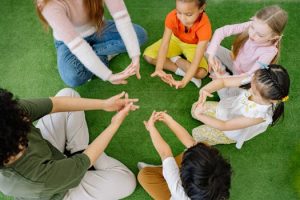Mindfulness and Emotional Regulation in the Classroom
In today’s fast-paced and technology-driven world, it’s becoming increasingly difficult for students to stay focused and manage their emotions in the classroom. With distractions everywhere and academic pressure mounting, it’s no wonder that the concept of mindfulness and emotional regulation is gaining popularity in the education system. But what exactly is mindfulness and emotional regulation, and how can it benefit students in the classroom? In this article, we will explore the impact of practicing mindfulness and emotional regulation in the classroom and how it can contribute to a more positive and productive learning environment for students.
What is Mindfulness?
Mindfulness is the act of being fully present and aware in the present moment, without judgment or distraction. It is a practice that involves paying attention to our thoughts, emotions, and surroundings with openness and curiosity. This practice encourages individuals to be more in tune with themselves and their surroundings, helping them develop a deeper awareness of their thoughts, emotions, and actions. By being mindful, individuals are better equipped to regulate their emotions and manage stress effectively.
How Does Mindfulness Benefit Students?
In the education system, mindfulness has been found to have numerous benefits for students. Studies have shown that practicing mindfulness can help students improve their focus and attention, reduce stress and anxiety, and enhance emotional regulation skills. It also promotes a more positive and proactive approach towards academic and personal challenges.
By being more mindful, students can develop a deeper connection with themselves, which can lead to improved self-awareness and emotional intelligence. This, in turn, can help students better understand and manage their emotions, leading to reduced behavioral issues and better decision-making skills.
How Does Emotional Regulation Tie Into Mindfulness?
In simple terms, emotional regulation is the ability to manage and control one’s emotions, including both positive and negative feelings. During childhood and adolescence, emotional regulation skills are still developing, and that’s where mindfulness comes into play. By practicing mindfulness, students can increase their self-awareness and gain a better understanding of their emotions.
Through mindfulness, students can learn to identify and label their emotions, understand the root cause of these emotions, and develop healthier coping mechanisms. This not only benefits their mental and emotional well-being, but it also has a positive impact on their academic performance.
Impact of Mindfulness and Emotional Regulation in the Classroom
The benefits of practicing mindfulness and emotional regulation are not limited to just individuals; they also have a significant impact on the classroom environment. By incorporating mindfulness practices into daily classroom routines, educators can create a positive and supportive learning environment that encourages students to stay focused, engage in meaningful discussions and resolve conflicts peacefully.
Teaching mindfulness can also help students develop empathy and compassion towards their peers, leading to improved relationships and reduced bullying behavior. It also promotes a growth mindset, where students are more willing to take risks and learn from mistakes rather than fear failure.
Incorporating Mindfulness and Emotional Regulation in the Curriculum
To fully reap the benefits of practicing mindfulness and emotional regulation, it’s essential to incorporate it into the curriculum. This can be done through various activities, such as breathing exercises, guided meditations, journaling, and mindful movement. These practices can easily be integrated into different subjects, such as physical education, health classes, or even during transitions between lessons.
Educators can also model mindful behavior, leading by example and creating a safe and non-judgmental space for students to practice mindfulness. By incorporating these practices into the curriculum and creating a supportive learning environment, students can develop lifelong skills that will benefit them not only in the classroom but also in their personal and professional lives.
In conclusion, the incorporation of mindfulness and emotional regulation in the classroom can have a profound and positive impact on students. By teaching students to be more mindful, educators can help them develop essential emotional regulation skills that will benefit them in all aspects of their lives. It’s time to prioritize the well-being of our students and create a more positive and productive learning environment through the practice of mindfulness.








